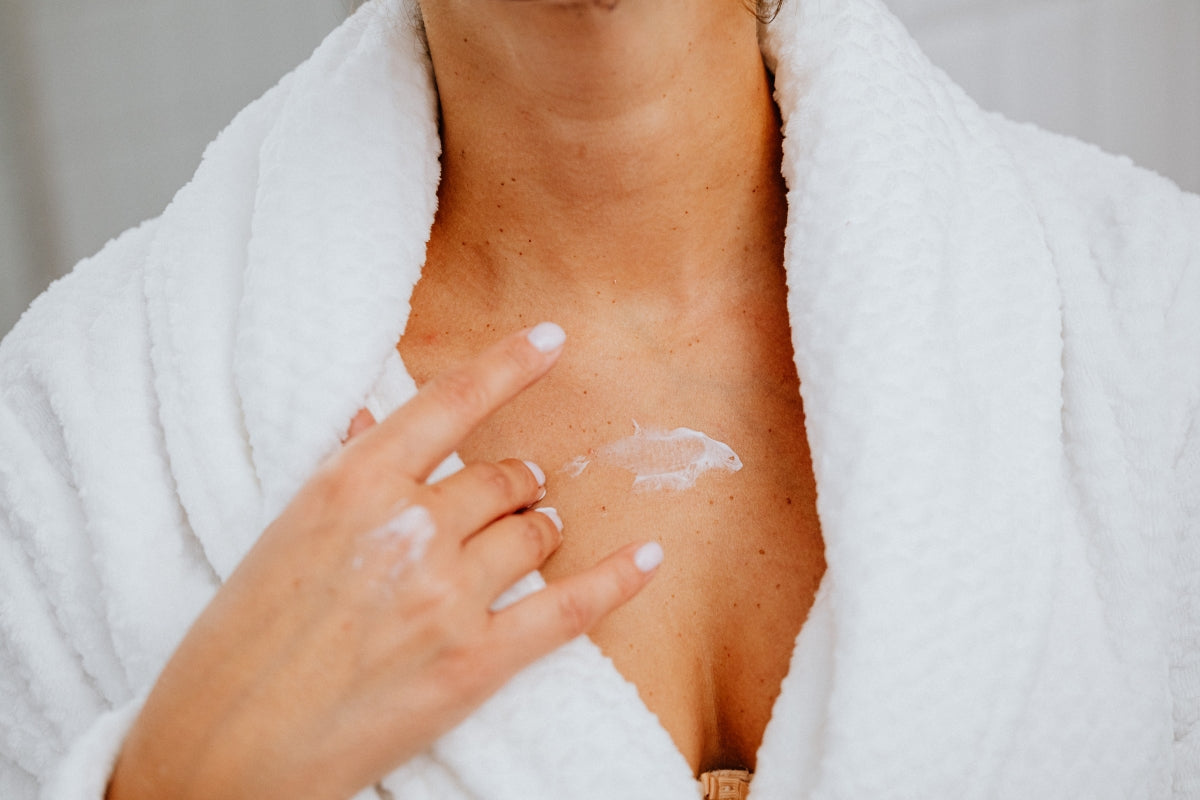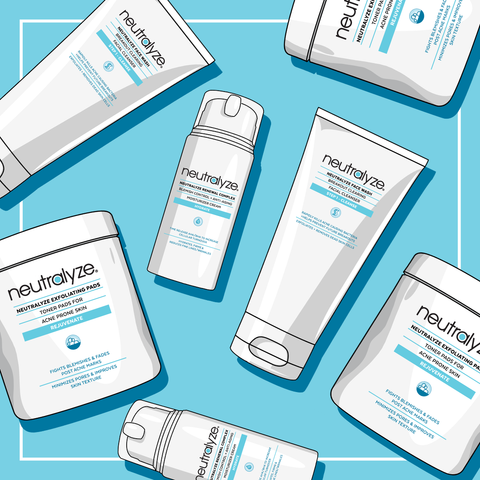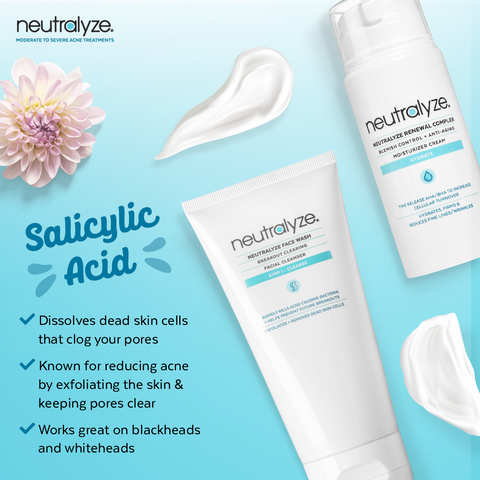Treatment Options for Persistent Adult Acne

Acne is one of the most common skin conditions among people of all ages. Though often associated with puberty as a rite of passage that many teenagers go through, acne can also persist to adulthood. Women in particular have a higher rate of prevalence, with acne affecting even those in their 20s, 30s, and 40s.
While the occurrence decreases over time, acne, if left untreated, can leave scars and have a long-lasting effect on your morale and self-esteem. Fortunately, there are reliable acne treatments for adults that can address the inflammation and significantly reduce the chances of scarring.
But before getting into the treatments, let’s first take a look into what adult acne is and what causes it.
What is Adult Acne?
Adult acne, as with teen acne, can be caused by your skin glands producing excess sebum leading to clogged pores or by an acne-causing bacteria P. acnes. However, what often causes adult acne is unique to post-adolescents, and can include chronic stress, medications, and fluctuations in hormones caused by pregnancies, menstruation, or menopause. The last reason is why women are more likely to develop acne than men, although men may also develop acne when experiencing physical or emotional stress.
There are two subtypes of adult acne: persistent, which is the continuation or relapse of teen acne, and the less common late onset, which is the acne breakout in adults who haven’t experienced it before.
Adult acne also tends to be redder and more sensitive as these are often caused by inflammation and usually occur at the lower part of the face, including the jaw, chin, and mouth. Breakouts can also happen around the neck and chest area. Since adults have slower skin regeneration compared to teens, acne scars may take longer to heal, and may become a contributing factor to negative self-image and low self-esteem.
Causes of Adult Acne
There are many factors that can trigger a breakout of acne in adults, but they can be generally classified into biological factors and lifestyle factors.
Biological Factors
Biological or internal factors are those that are beyond your control or are the side-effects of medications you may need to take for proper body function. These factors include:
Heredity
- Some people are genetically predisposed to acne due to some inherited traits, like the overproduction of dead skin cells, large pores, or the tendency to produce excess sebum leading to oily skin. Genetics also play a role in how your immune system responds to acne-causing bacteria, determining the likelihood of breakouts. Some people are predisposed to produce excess androgen, leading to hormone-related flare-ups. If both of your parents have acne, then your chance of having it runs high.
Certain health conditions
- Health conditions such as polycystic ovarian syndrome (PCOS) or adrenal dysplasia may cause your body’s hormone levels to fluctuate, causing acne breakouts. In these cases, acne is only a symptom of the underlying condition. PCOS causes the testosterone levels in women to rise, leading to a variety of symptoms such as irregular menstruation, abnormal hair growth on your face or body, and a worsening case of acne. Adrenal dysplasia on the other hand increases the androgen level on your body and may also lead to a flare-up.
Hormonal imbalance
- As mentioned previously, hormonal balance can also be affected by certain bodily functions such as menstruation, pregnancy, and menopause. Any of these can change the balance of estrogen and androgen in the body which can lead to breakouts. A study showed that 70% of women experience a worsening of acne symptoms before their menstrual cycle. Pregnant women who experienced premenstrual acne are prone to flare-ups during the first or second trimester as their androgen levels rise, causing glands to produce more sebum. Androgen excess also accounts for late onset acne in 10% of women experiencing menopause.
Reaction to medications
- Although less common, medication may also produce acne or acne-like symptoms. Drug-induced acne (DIA) can occur as adverse effects to certain medications such as lithium, corticosteroids, certain antibiotics, halogens, thyroid hormones, and antiepileptic drugs. DIA is not limited to drugs that are taken orally; those that are taken topically or even inhaled may trigger breakouts. DIA is different from true acne in that these usually occur in the chest or back area and are generally uniform in appearance, though certain drugs that affect hormone levels can trigger true acne. Oral contraceptives may also raise androgen levels that can cause acne.
Lifestyle Factors
Lifestyle factors are external factors that affect our health and well-being and may bring about the appearance of acne on our skin. Let’s find out more below:
Stress
- Stress, especially long-term stress, has been known to trigger or worsen health problems, including skin conditions like acne. This is because chronic stress increases the production of stress hormones like cortisol, which dehydrates your skin while also making your sebaceous glands produce more oil. This results in clogging up your pores and making your skin a viable breeding ground for acne-causing bacteria. Stress also weakens our immune response, hence the increased chances of inflammation.
Smoking
- A study on cigarette smoking showed that women who smoke are more likely to develop acne of the non-inflammatory kind. Non-inflammatory acne usually appears on the cheeks and looks like skin-colored bumps. Smoking cigarettes also dehydrates skin, leading to the production of sebum and decreased Vitamin E. This makes your skin more susceptible to bacterial infections. Smoking has also been linked to acne inversa, which appears in areas that are prone to sweating and is likely to leave scars.
Diet
- Consuming foods and drinks with a high glycemic index (GI), like white bread, bagels, fries and sugary drinks, raises the sugar level in your body and can trigger acne. This is because high sugar levels mean elevated insulin levels to facilitate the transportation of sugar in your bloodstream, and elevated insulin levels makes the androgen hormones in your body more active. Studies have also suggested that foods rich in omega-6 fatty acids, such as poultry, eggs, and nuts, may trigger inflammation that causes acne.
Cosmetic products
- Various cosmetic products contain chemical ingredients that may cause acne on certain skin types. Breakouts caused by these products often appear as small bumps or whiteheads on the forehead, cheeks, and chin area. Acne around the mouth area may mean that your lipstick or lip balm is triggering the reaction, while those that appear on your hairline or forehead may indicate that your hair products may be the culprit. Makeup products with comedogenic ingredients are the likely cause as they tend to accumulate in your skin’s pores, clogging them and causing breakouts.
Pollution
- People living in areas with high levels of pollution face a heightened risk in developing acne due to the harmful chemicals and gases present in the air. Airborne pollutants stimulate the release of keratinocytes and melanocytes that trigger inflammation. Exposure to pollution also exerts stress in the body that depletes its natural defenses in the form of Vitamin C and E, further making the bodily environment more conducive for inflammatory responses, especially in the skin.
Other lifestyle factors
- Poor sleeping habits, sleeping on dirty pillowcases, poor hygiene, and the use of abrasive skin products also contribute to acne flare-ups. Frequently touching your face can also lead to breakouts as you’re basically introducing bacteria to your face via your hands.
Treatment and Care
Fortunately, adult acne can still be addressed through proper treatment and prevented through the cultivation of healthy habits. Here’s how you can take care of your skin and prevent breakouts:
1. Choose the right treatment solutions.
For moderate to severe acne, treatment solutions can either be oral or topical. For oral treatments, there are antibiotics to reduce acne-causing bacteria and inflammation, anti-androgen drugs to prevent androgen hormones from stimulating production of sebum, and FDA-approved combinations of oral contraceptives that combine progesterone and progestin.
For topical treatments, there are retinoid creams geared towards preventing the clogging of hair follicles, antibiotics used in conjunction with retinoid creams, and azelaic acid that also has antibacterial properties.
Salicylic acid and nitric oxide are also two of the topical treatments used to address acne flare-ups. Extracted from willow bark, salicylic acid has anti-microbial, anti-inflammatory, and comedolytic (comedone-inhibiting) properties that make it an effective solution against acne. For moderate to severe acne, you can try treatment solutions that combine salicylic acid with nitric oxide, which promotes healing and reduces inflammation.
2. Use appropriate hair and skincare products.
When choosing the right product for your hair and skin, look for those that are oil-free, non-comedogenic, and non-acnegenic. These will lessen the chances of flare-ups, but do take note that finding the right product for you may take some trial and error; each skin type is different and there are other factors involved in breakouts. Also, when you’re having an acne breakout, try to use makeup sparingly.
3. Wash your face twice a day.
While it may be tempting to wash your face as often as you can, doing so more than twice a day stimulates the production of excess oil and may cause skin irritation. Wash your face in the morning and in the evening before going to bed. Use warm water and a mild cleanser, and pat dry your face with a soft, clean towel. Avoid scrubbing your face as this may further irritate your skin.
On a related note, if you also tend to have oily hair, wash your hair frequently as the oil in your hair may add to the oil on your face.
4. Develop healthy habits.
Besides causing or aggravating health problems, certain lifestyle habits such as smoking or sleeping late are also contributing factors to acne breakouts. Try to cut back, if not outright quit smoking to lessen chances of developing smoker’s acne. Also, try to sleep at a regular time each night, ideally by 11pm and for at least 7 hours to give your body ample time to rest and recover.
Switching over to a low-GI diet can also help prevent or reduce the frequency of occurrence of acne breakouts. Foods rich in omega-3 such as fish, nuts, spinach, kale, and soy products may help reduce inflammation and would be a good addition to your meals.
5. Consult with your dermatologist.
If your acne condition has not improved with medication and lifestyle changes, consult with your dermatologist. Acne breakouts can be symptomatic of other health problems. Your dermatologist may also prescribe you different medication that can help alleviate the breakout or shed light as to what may be causing your acne.
Having adult acne doesn’t necessarily mean you have to resign yourself to simply living with it as a matter of fact. Understanding the cause of your acne goes a long way in helping to address flare-ups. Various acne treatments for adults are also available to help you deal with breakouts and with the proper treatment and appropriate lifestyle changes, adult acne can be effectively managed.


